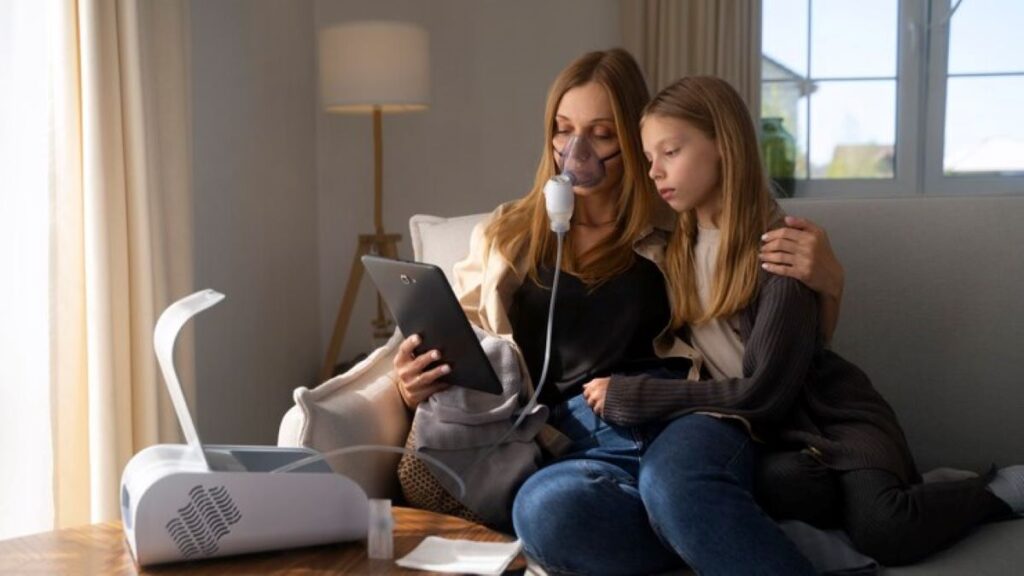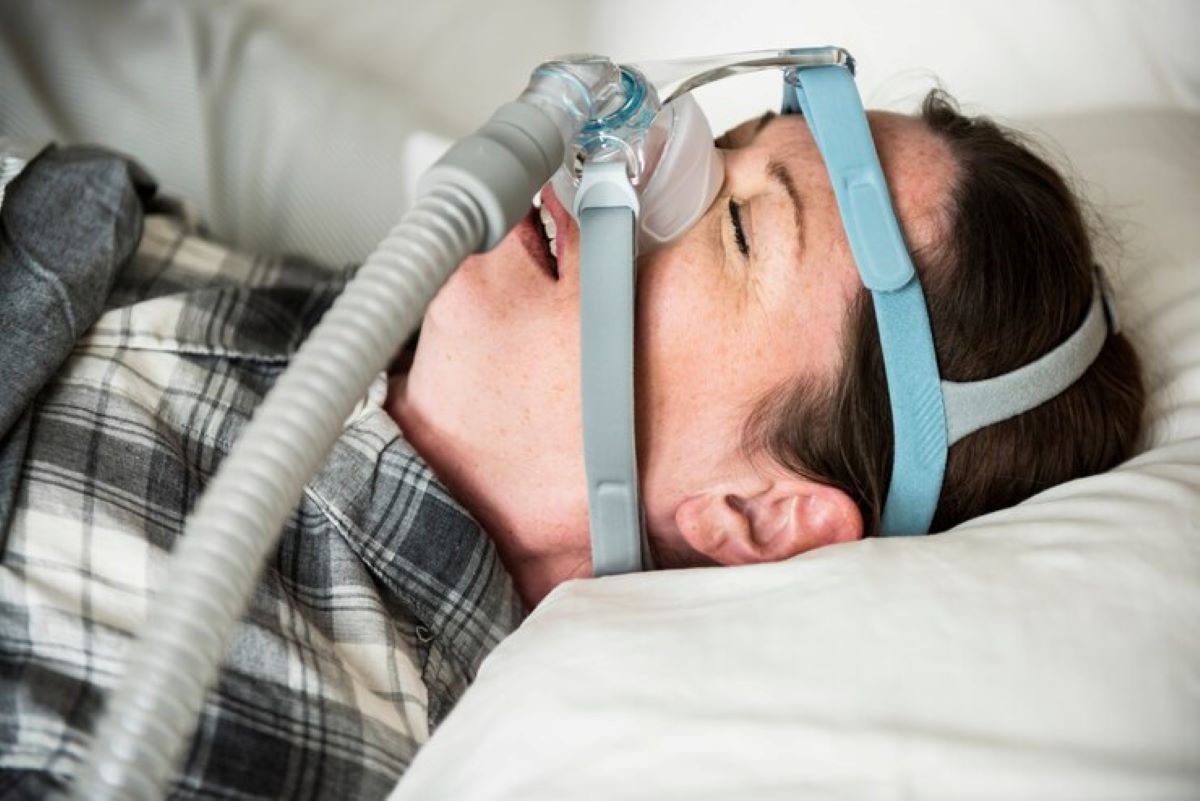What is CPAP therapy and why is it important for obstructive sleep apnea (OSA) treatment?
CPAP therapy delivers a continuous stream of pressurised air through a mask to keep airways open during sleep, preventing the breathing interruptions characteristic of obstructive sleep apnea. This treatment remains the gold standard for managing moderate to severe OSA, helping millions of patients achieve restorative sleep and avoid serious health complications.
How does obstructive sleep apnea occur?
Obstructive sleep apnea occurs when throat muscles relax excessively during sleep, causing the airway to collapse or become blocked. Without intervention, this condition leads to repeated breathing pauses throughout the night, often hundreds of times. These interruptions fragment sleep quality and deprive the body of adequate oxygen levels.
The role of the CPAP mask
The CPAP mask serves as the critical interface between the machine and the patient. It creates a seal around the nose, mouth, or both, depending on the mask style chosen. When properly fitted and functioning, the mask delivers the prescribed air pressure needed to maintain an open airway passage.
How does CPAP therapy work?
Here’s how CPAP therapy works:
- The CPAP machine generates pressurised air at a level determined by sleep study results
- Air travels through flexible tubing to reach the mask
- The mask cushion creates an airtight seal against facial contours
- Continuous pressure acts as a pneumatic splint, preventing airway collapse
Why replacing your CPAP mask matters
Understanding how often you should replace a CPAP mask and why it matters directly impacts treatment success. Worn or damaged masks compromise the seal integrity, reducing therapy effectiveness and potentially worsening OSA symptoms.
What Are the Main Components of a CPAP Mask and How Do They Wear Out Over Time?
A CPAP mask consists of four primary components that work together to deliver effective therapy. The mask cushion (or nasal pillows) creates the seal against your face, whilst the frame provides structural support to hold everything in position. The headgear (or chin strap) secures the mask to your head, and the tubing connects your mask to the CPAP machine.
Each component faces unique challenges that affect its lifespan:
Mask Cushion/Nasal Pillows
These parts make direct contact with your skin throughout the night, absorbing facial oils, sweat, and dead skin cells. The silicone material gradually softens and loses its ability to maintain a proper seal. Microscopic cracks can develop in the material, creating pathways for bacteria whilst compromising air pressure delivery.
Frame
The rigid structure supporting your mask experiences constant pressure adjustments and handling during nightly use. Repeated stress causes the plastic or composite materials to bend slightly, losing their original shape and alignment.
Headgear/Chin Strap
Elastic straps stretch with every adjustment and washing cycle. The fabric absorbs oils from your skin and hair, whilst the elastic fibres break down from repeated tension and release. This headgear wear and tear directly impacts mask stability.
Tubing
Flexible tubing bends and twists nightly, developing microscopic tears or cracks that may remain invisible to the naked eye. Temperature fluctuations and exposure to moisture accelerate material degradation.
How Often Should Each Part of a CPAP Mask Be Replaced for Optimal Performance?
Each component of your CPAP mask has a specific CPAP mask replacement schedule that ensures consistent therapy delivery. Following industry-standard guidelines helps maintain the seal quality and pressure levels your treatment requires.
Recommended Replacement Timeline by Component
Mask cushion replacement frequency matters most for therapy effectiveness:
- Mask Cushion/Nasal Pillows: Every 1-3 months
- Mask Frame: Every 6 months
- Headgear/Chin Strap: Every 6 months
- Tubing: Every 3-6 months (following the tubing replacement timeline)
The cushion requires the most frequent replacement because it maintains direct, constant contact with your facial skin throughout the night. Skin oils, facial creams, and natural moisture break down the silicone or gel material, causing it to soften and lose its ability to form an airtight seal.
What Affects Component Lifespan?
Your individual usage patterns significantly impact how long each part remains effective. Nightly users who wear their masks for 7-8 hours experience faster material degradation than those using CPAP therapy for shorter periods.
Cleaning practices play an equally critical role—daily washing with mild soap removes oils that accelerate breakdown, whilst harsh chemicals or hot water can damage materials prematurely. The environment where you store your equipment also matters; exposure to direct sunlight or extreme temperatures can weaken elastic fibres and silicone components faster than storage in cool, dry locations.

Why Does Timely Replacement of CPAP Mask Parts Matter for Therapy Effectiveness?
Worn CPAP mask components directly undermine your prescribed therapy by creating air leaks that reduce the pressure delivered to your airway. When cushions soften or frames lose their shape, gaps form between the mask and your face, allowing pressurised air to escape rather than keeping your airway open throughout the night.
CPAP leaks impact on therapy pressure loss in measurable ways. Your machine compensates for minor leaks by increasing output, but significant leaks prevent it from maintaining the prescribed pressure level. This means your airway may collapse during sleep despite wearing the mask, defeating the entire purpose of treatment.
The consequences of untreated leaks extend beyond a single restless night:
- Reduced apnoea-hypopnoea index (AHI) improvement – Your sleep apnoea events may not decrease as expected
- Persistent daytime fatigue – Inadequate pressure fails to prevent oxygen desaturation episodes
- Cardiovascular strain – Untreated breathing interruptions continue stressing your heart
- Treatment abandonment risk – Poor results may lead you to stop using CPAP altogether
The importance of knowing how often you should replace a CPAP mask becomes clear when considering therapy data. Studies show that masks with leaks exceeding 24 litres per minute significantly reduce treatment efficacy, yet many users continue with deteriorated equipment unaware their therapy has become compromised.
How Does Regular Replacement of CPAP Mask Components Affect User Comfort and Skin Health?
Worn cushions create pressure points and uneven contact against facial skin, forcing users to overtighten their headgear to maintain a seal. This excessive tightening leads to red marks, facial soreness, and disrupted sleep as discomfort wakes users throughout the night.
Degraded silicone cushions lose their soft, pliable texture and become stiff or tacky. The hardened material rubs against sensitive facial areas, causing skin irritation from masks including chafing, redness, and even pressure sores in severe cases. Users with sensitive skin or existing dermatological conditions experience heightened reactions to deteriorated cushion materials.
Stretched headgear straps compound these CPAP mask comfort issues by failing to distribute pressure evenly across the head and face. The elastic fibres lose their ability to maintain consistent tension, requiring constant readjustment during the night. Users find themselves waking repeatedly to retighten straps, defeating the purpose of restorative sleep therapy.
Bacterial accumulation in worn cushions poses additional skin health risks beyond visible irritation. Microscopic cracks in aged silicone harbour bacteria that transfer to facial skin during each use, potentially causing:
- Acne breakouts along mask contact areas
- Folliculitis (inflamed hair follicles)
- Contact dermatitis
- Fungal infections in warm, moist environments
Fresh cushions and properly elastic headgear maintain gentle, consistent contact that prevents these comfort and hygiene complications whilst supporting uninterrupted therapy adherence.
Can Visible Cleanliness Alone Guarantee Safety and Performance in CPAP Masks?
No, a clean appearance doesn’t ensure your mask is functioning properly. While CPAP mask cleaning is essential for removing visible oils and debris, it cannot substitute for replacement when materials begin to deteriorate.
Microscopic cracks often develop in cushions and frames long before they become visible to the naked eye. These hairline fractures compromise the seal quality, allowing air to escape even when the mask appears pristine. The silicone material in cushions gradually hardens through repeated exposure to facial oils and cleaning solutions, reducing flexibility without obvious visual changes.
Hidden deterioration manifests in several ways:
- Cushions lose their memory foam properties, failing to mould properly to facial contours
- Frame materials develop stress points at connection joints that weaken over time
- Tubing walls thin internally whilst maintaining an intact exterior appearance
- Headgear elastic fibres break down within the fabric structure, invisible from outside inspection
Bacterial colonisation can occur deep within porous materials where cleaning solutions cannot penetrate effectively. A mask may pass visual inspection yet harbour microorganisms that cause skin irritation or respiratory issues. The silicone material itself degrades at a molecular level, becoming less effective at maintaining the necessary seal pressure regardless of how frequently you clean it. This hidden degradation underscores the importance of understanding the limitations of CPAP mask cleaning, which cannot always prevent these issues from arising.

How Do Insurance Policies Influence the Frequency at Which Users Can Replace Their CPAP Masks?
CPAP supply insurance coverage typically dictates a standardised replacement schedule that aligns closely with manufacturer recommendations. Most insurance providers allow mask cushion replacements every 1-2 months, full mask replacements every 3 months, and headgear replacements every 6 months under their coverage plans.
These guidelines exist to balance patient care with cost management. Insurance companies recognise that regular replacement maintains therapy effectiveness whilst preventing more expensive complications from untreated sleep apnoea. The schedules reflect industry standards based on typical wear patterns and hygiene requirements.
Users should understand that insurance-approved replacement frequencies represent minimum standards. If you notice visible damage, persistent leaks, or reduced comfort before the covered replacement period, you can often request early replacement with proper documentation from your healthcare provider. Many insurers require proof of medical necessity for replacements outside standard intervals.
Verifying your specific policy details is essential because coverage varies significantly between providers and plans. Some policies may offer more generous replacement schedules, whilst others impose stricter limitations. Contact your insurance company directly or consult with your durable medical equipment supplier to understand:
- Exact replacement intervals for each component
- Documentation requirements for early replacements
- Out-of-pocket costs for additional supplies
- Pre-authorisation procedures
Understanding how often should you replace a CPAP mask and why it matters helps you maximise your insurance benefits whilst maintaining optimal therapy outcomes.
More to Read : What Is the Best CPAP Mask for Side Sleepers?
FAQs-Replacing CPAP Mask and Why It Matters
CPAP therapy delivers a steady stream of pressurised air through a mask to keep your airway open during sleep, preventing breathing interruptions caused by obstructive sleep apnea (OSA).
2. Why is CPAP therapy important for treating sleep apnea?
CPAP therapy is the gold-standard treatment for moderate to severe OSA. It prevents breathing pauses, improves sleep quality, and reduces risks of heart disease, stroke, and fatigue.
3. How does a CPAP machine work?
The CPAP machine generates continuous air pressure that travels through tubing into a mask, creating a pneumatic splint that prevents airway collapse during sleep.
4. What role does the CPAP mask play in therapy?
The CPAP mask forms a secure seal over your nose, mouth, or both, allowing the machine to deliver consistent pressure to keep your airway open all night.
5. How often should you replace your CPAP mask and parts?
To maintain performance, replace the mask cushion every 1–3 months, tubing every 3–6 months, and headgear every 6 months or as recommended by your healthcare provider.
6. What happens if you don’t replace your CPAP mask regularly?
Worn-out masks cause air leaks, reduced pressure delivery, skin irritation, and ineffective therapy—leading to persistent sleep apnea symptoms and poor sleep quality.
7. Can cleaning alone keep your CPAP mask effective?
No. While daily cleaning removes dirt and oils, it cannot repair material wear or invisible cracks that reduce seal quality. Regular replacement remains essential.
8. How does CPAP therapy improve overall health?
By restoring normal breathing patterns, CPAP therapy enhances oxygen levels, reduces daytime fatigue, improves mood and concentration, and lowers cardiovascular risks.
9. Does insurance cover CPAP mask replacement?
Most insurance plans cover CPAP mask cushions every 1–3 months and full masks every 3 months, ensuring patients maintain effective and hygienic sleep apnea treatment.

